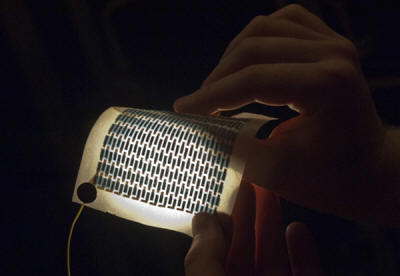|
by Melissae Fellet
12 July 2011
Researchers at the Massachusetts
Institute of Technology printed them on untreated copy paper using a
technique that could help slash the cost of producing solar cells.
The glass or plastic backing typically
used for solar cells accounts for 25 to 60 per cent of the total
cost for materials and so lightweight paper-based cells could
significantly reduce photovoltaic production, transportation and
installation costs.
A thin mask patterned with holes restricted the placement of the five separate layers of material into cells:
The fact that the vapor was deposited at
a relatively low temperature means that the technique allows solar
cells to be created on fabric, plastic, tissue paper and even
printed newspaper.
A lightweight solar cell could be used for wallpaper or window shades and simply installed using staples or glue.
|

